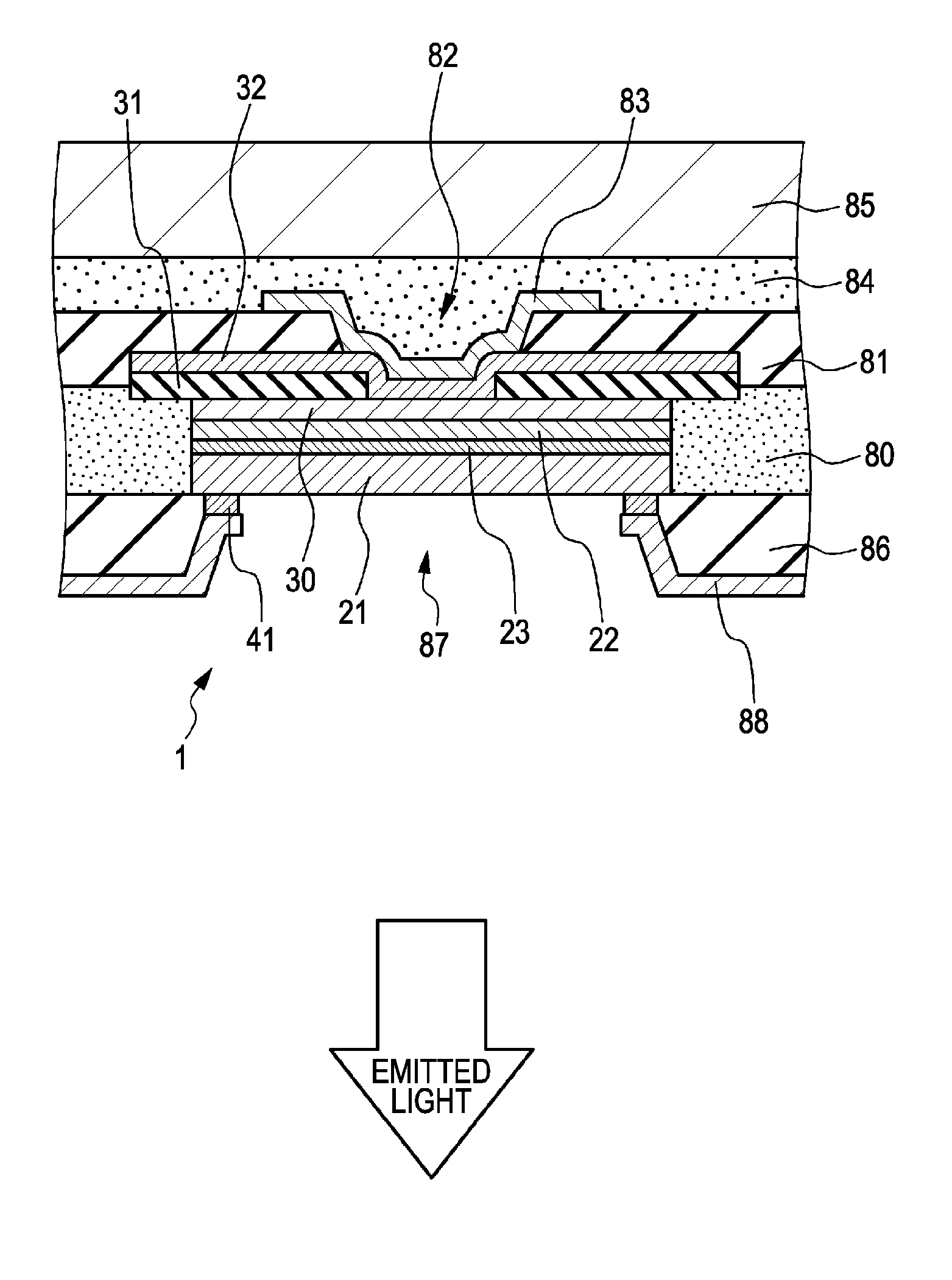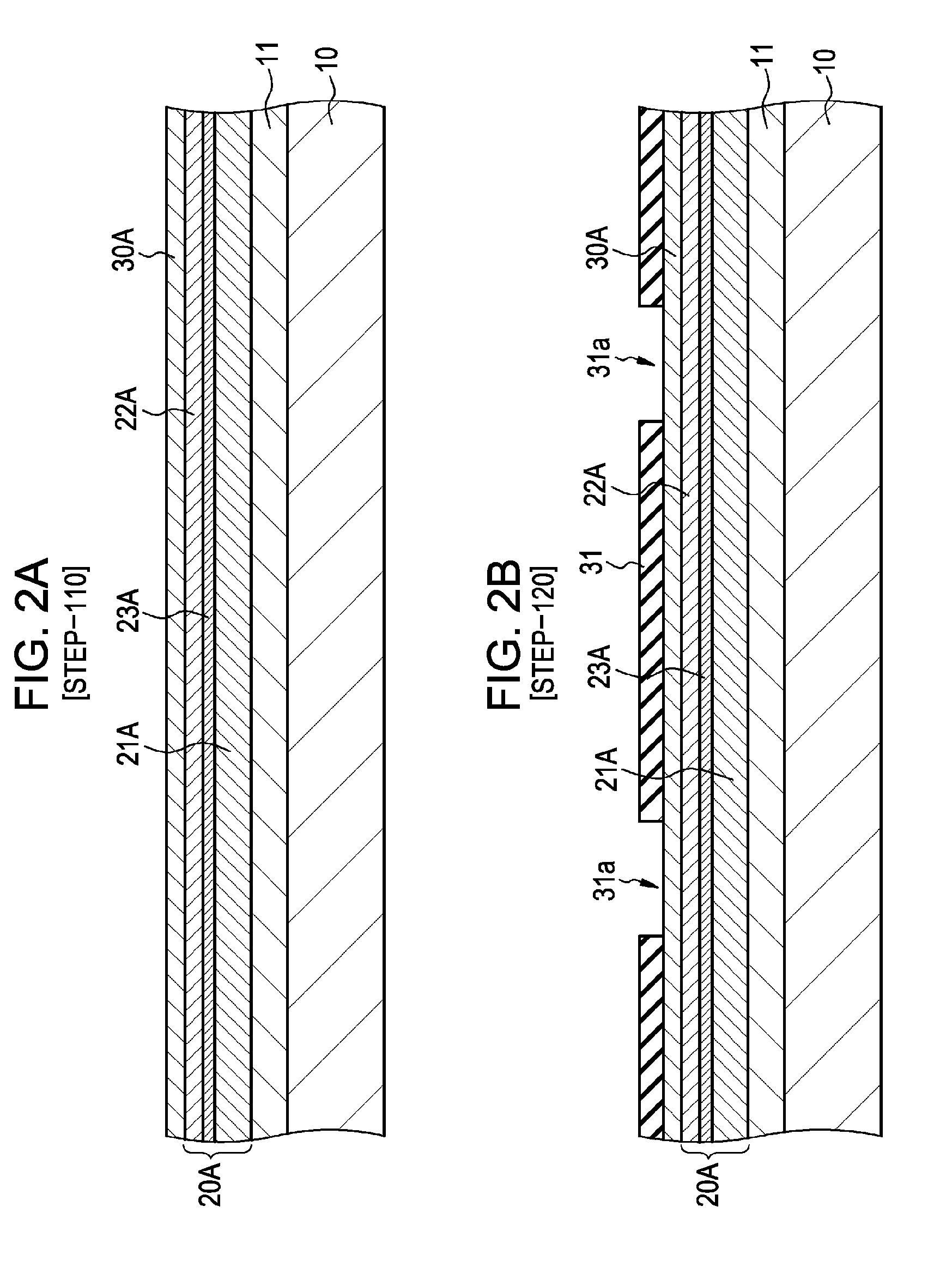Semiconductor light-emitting device and method for manufacturing the same
a semiconductor and light-emitting device technology, applied in the direction of semiconductor/solid-state device manufacturing, semiconductor devices, electrical devices, etc., can solve the problems of reduced light-emitting intensity, reduced light-emitting efficiency as the entire semiconductor light-emitting device is reduced, and increased current density, so as to prevent the occurrence of migration with more certainty, reduce the light-emitting efficiency, and prevent the light-emitting effect of the second electrode from being decreased
- Summary
- Abstract
- Description
- Claims
- Application Information
AI Technical Summary
Benefits of technology
Problems solved by technology
Method used
Image
Examples
example 1
[0050]Example 1 relates to a semiconductor light-emitting device according to an embodiment of the present invention and a method for manufacturing the semiconductor light-emitting device. A semiconductor light-emitting device 1 in Example 1 is specifically composed of a light-emitting diode.
[0051]As shown in FIG. 1A that is a conceptual diagram and FIG. 1C that is a schematic sectional view, the semiconductor light-emitting device 1 of Example 1 includes:
[0052](A) a light-emitting portion 20 obtained by laminating in sequence a first compound semiconductor layer 21 having a first conductivity type (specifically, n type in Example 1), an active layer 23, and a second compound semiconductor layer 22 having a second conductivity type (specifically, p type in Example 1) that is different from the first conductivity type;
[0053](B) a first electrode (n-side electrode) 41 electrically connected to the first compound semiconductor layer 21;
[0054](C) a transparent conductive material layer ...
example 2
[0091]Example 2 is a modification of Example 1. In Example 2, the semiconductor light-emitting devices 1 obtained in Example 1 are rearranged in an array (in a two-dimensional matrix) to manufacture, for example, an image display apparatus. Specifically, in Example 2, the steps described below are performed after Step-160.
[0092]Step-200
[0093]In this step, semiconductor light-emitting devices 1 are selected at a desired pitch. More specifically, semiconductor light-emitting devices 1 are selected from many semiconductor light-emitting devices 1 that are obtained in Step-160 of Example 1 and are arranged in a two-dimensional matrix, at a pitch of every M devices in an X direction and every N devices in a Y direction. There are prepared a relay substrate 60 on which a weak adhesive layer 61 composed of silicone rubber is formed and a second relay substrate 70 in which an alignment mark (not shown) composed of a metal thin film or the like is formed in a predetermined position and on wh...
PUM
 Login to View More
Login to View More Abstract
Description
Claims
Application Information
 Login to View More
Login to View More - R&D
- Intellectual Property
- Life Sciences
- Materials
- Tech Scout
- Unparalleled Data Quality
- Higher Quality Content
- 60% Fewer Hallucinations
Browse by: Latest US Patents, China's latest patents, Technical Efficacy Thesaurus, Application Domain, Technology Topic, Popular Technical Reports.
© 2025 PatSnap. All rights reserved.Legal|Privacy policy|Modern Slavery Act Transparency Statement|Sitemap|About US| Contact US: help@patsnap.com



